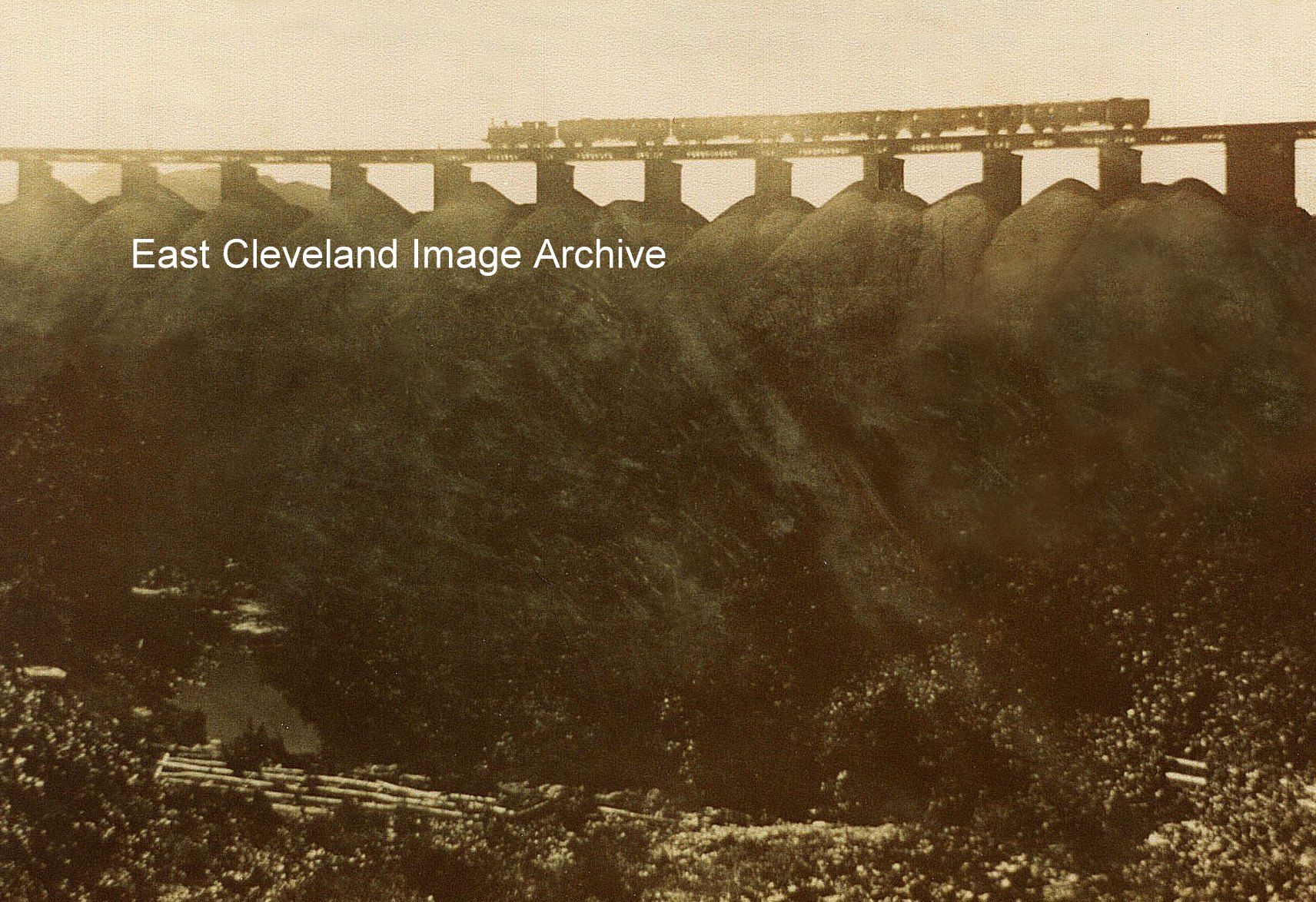
But not by this train – a local commuter makes its way across the skyline towards Loftus as the biggest shale heap in the area takes shape! This image provoked several comments: Graham Suggett asked: “Is the Kilton Viaduct the same as the Carlin How to Loftus Viaduct? Did the infilling start because of a cracked pier in 1911 to 1914; due to the mining of ironstone from underneath? My memories go back to the 1930′s. I was born in Carlin How and my grandparents lived at Liverton Mines. We moved to Darlington at the outbreak of WWII to escape the expected raids by the Bosch on the steelworks and Skinningrove Harbour. However, I was a regular visitor to Liverton Mines both during and after the War (I was there and saw the Lockheed Lightning crash). I knew the viaduct and Kilton Woods well, but never ventured beyond the railway station on the hill between Liverton Mines and Loftus.” Andrew Pryce commented: “As far as I know the Kilton Viaduct is indeed the Carlin How to Loftus viaduct, I used to cycle from Carlin How to Loftus along the railway track (before they were re-laid) it was a lot easier than going along the road used to get onto the old trackway from Kilton Lane by the footbridge, then it was an easy cycle to Loftus and my mate (Dave Bullock) lived in the old station house, that would have been about 1966.” Derick Pearson supplied the following: “ The reason for the burying of Kilton Viaduct was the subsidence that resulted from Ironstone mining underneath the pillars. This became so bad that the line was closed in January 1911 and rail passengers carried between Loftus and Skinningrove in Motor char-a bancs. Approximately three-quarters of a million tons of spoil from the nearby mines were used to earth up the viaduct. Another railway bridge in the neighbourhood had also suffered considerably from the effects of subsidence. The railway line between Boosbeck and Brotton crosses the road from Lingdale to New Skelton by a single arch bridge. When this subsided a second bridge was built on top of it in order to maintain the railway at its correct level. The lower of the two brick arches has also had to be heavily reinforced with old rails.
P W B Semmens, 52 Belle Vue Grove, Middlesbrough.“
Simon Chapman tells us: ”Messrs Bell Brothers wanted to mine ironstone from beneath the viaduct from their Carlin How Mine so arrangements were made to fill in the viaduct to support it from 1907. In January 1911 it was found that one of the piers had begun to crack because of unequal infilling so rail services were suspended for a fortnight to enable extra tipping to take place. Shale was tipped from Liverton and Loftus Mines and was completed by 1914.”
Image courtesy of the Pem Holliday Collection, thanks to Graham Suggett, Andrew Pryce and Derick Pearson for their updates. Many thanks to Simon for that definitive comment.
This viaduct is the one that goes from Liverton Mines to Carlin How – it id not go to Loftus – my dad used to use this route when working at the Steel Works. Finally; could you tell me, if the bankside to the RIGHT of the closed railway station between Liverton Mines and Loftus still has the most tasty miniature strawberries?
Re:wild strawberries,
The railway siding / shale incline down towards the culvert on the “white bridge”
side still has them. Also you can locate them in Brotton on the siding above the old reservoir site, near Huntcliffe Drive.
Why was the path to Carlin How referred to “going over the docks?”